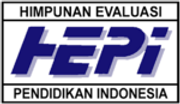The strategies of blended learning in new normal era at Kuala Lumpur Indonesian School
Abstract
Keywords
Full Text:
PDFReferences
Abdul Majid, M. P. (2017). Strategi Pembelajaran. Remaja Rosdakarya.
Abdullah, W. (2018). Model Blended Learning dalam Meningkatkan Efektifitas Pembelajaran. Fikrotuna, 7(1), 855–866. https://doi.org/10.32806/jf.v7i1.3169
Almonacid-Fierro, A., Vargas-Vitoria, R., De Carvalho, R. S., & Fierro, M. A. (2021). Impact on teaching in times of COVID-19 pandemic: A qualitative study. International Journal of Evaluation and Research in Education, 10(2), 432–440. https://doi.org/10.11591/ijere.v10i2.21129
Arsyad, A. (2014). Media Pembelajaran. Rajawali Pers.
Cahyadi, A., Tarbiyah, F. I., Keguruan, &, & Banjarmasin, I. A. (2017). Holistik Menuju holistik pembelajaran campuran (blended learning). 2(1).
Derbel, F. (2017). Blended learning: Concept, emerging practices and future prospects. Proceedings of the European Conference on E-Learning, ECEL, 2010-October(September), 142–149.
Di Gennaro, F., Pizzol, D., Marotta, C., Antunes, M., Racalbuto, V.,
Veronese, N., & Smith, L. (2020). Coronavirus diseases (COVID-19) current status and future perspectives: A narrative review. International Journal of Environmental Research and Public Health, 17(8), 1–11. https://doi.org/10.3390/ijerph17082690
Djalante, R., Lassa, J., Setiamarga, D., Sudjatma, A., Indrawan, M., Haryanto, B., Warsilah, H. (2020). Review and analysis of current responses to COVID-19 in Indonesia: Period of January to March 2020. Progress in Disaster Science, 6, 1–9. https://doi.org/10.1016/j.pdisas.2020.100091
Handoko, H., & Waskito, W. (2018). Blended Learning: Konsep dan Penerapannya. In Blended Learning: Konsep dan Penerapannya. https://doi.org/10.25077/car.64.60
Hermawan, D. (2021). The Rise of E-Learning in COVID-19 Pandemic in Private University: Challenges and Opportunities. IJORER : International Journal of Recent Educational Research, 2(1), 86–95. https://doi.org/10.46245/ijorer.v2i1.77
Istiningsih, S., & Hasbullah, H. (2015). Blended Learning, Trend Strategi Pembelajaran Masa Depan. Jurnal Elemen, 1(1), 49. https://doi.org/10.29408/jel.v1i1.79
Kintu, M. J., Zhu, C., & Kagambe, E. (2017). Blended learning effectiveness: the relationship between student characteristics, design features and outcomes. International Journal of Educational Technology in Higher Education, 14(1), 1–20. https://doi.org/10.1186/s41239-017-0043-4
Kiran, E. (2020). Prominent Issues About the Social Impacts of Covid 19. Gaziantep University Journal of Social Sciences, 19(COVID-19 Special Issue), 752–766. https://doi.org/10.21547/jss.787779
Lalima, D., & Lata Dangwal, K. (2017). Blended Learning: An Innovative Approach. Universal Journal of Educational Research, 5(1), 129–136. https://doi.org/10.13189/ujer.2017.050116
Ling, G. H. T., & Ho, C. M. C. (2020). A new decade for social changes. Technium Social Sciences Journal, 7(May), 312–320. Retrieved from https://techniumscience.com/index.php/socialsciences/article/view/332/124
Lisa, R., Kristian, J., Curtis, R., & Charles, R. (2020). Learning, Design, and Technology. In Learning, design, and technology: An international compendium of theory, research, practice, and policy. https://doi.org/10.1007/978-3-319-17727-4
Rambe, R. N. K. (2018). Penerapan Strategi Index Card Match Untuk Meningkatkan Hasil Belajar Siswa Pada Mata Pelajaran Bahasa Indonesia. Jurnal Tarbiyah, 25(1).
Saladino, V., Algeri, D., & Auriemma, V. (2020). The Psychological and Social Impact of Covid-19: New Perspectives of Well-Being. Frontiers in Psychology, 11(October). https://doi.org/10.3389/fpsyg.2020.577684
Sari, M. (2020). Blended Learning, Model Pembelajaran Abad Ke-21 Di Perguruan Tinggi, Fakultas Tarbiyah Dan Keguruan Iain Imam Bonjol Padang. 127.
Sunhaji. (2014). Konsep Manajemen Kelas Dan Implikasinya Dalam Pembelajaran. Jurnal Kependidikan, Vol. II(2).
Suryaman, M., Cahyono, Y., Muliansyah, D., Bustani, O., Suryani, P., Fahlevi, M., … Harimurti, S. M. (2020). COVID-19 pandemic and home online learning system: Does it affect the quality of pharmacy school learning? Systematic Reviews in Pharmacy, 11(8), 524–530. https://doi.org/10.31838/srp.2020.8.74
Torales, J., O’Higgins, M., Castaldelli-Maia, J. M., & Ventriglio, A. (2020). The outbreak of COVID-19 coronavirus and its impact on global mental health. International Journal of Social Psychiatry, 66(4), 317–320. https://doi.org/10.1177/0020764020915212
Usman, U. (2019). Komunikasi Pendidikan Berbasis Blended Learning Dalam Membentuk Kemandirian Belajar. Jurnal Jurnalisa, 4(1), 136–150. https://doi.org/10.24252/jurnalisa.v4i1.5626
Wardani, D. N., Toenlioe, A. J. E., & Wedi, A. (2018). Daya Tarik Pembelajaran Di Era 21 Dengan Blended Learning. Jurnal Kajian Teknologi Pendidikan (JKTP), 1(1), 13–18.
Widara, K. (2020). Blended Learning Sebagai Alternatif Pembelajaran Di Era Digital. 2.
DOI: https://doi.org/10.18326/mdr.v13i1.35-54
Refbacks
- There are currently no refbacks.
Copyright (c) 2021 Elya Umi Hanik, Iis Afriyanti, Sayida Ruchyyah, Uli Nur Afiyah, Wardah Ayu Robi'attuladawiyah

This work is licensed under a Creative Commons Attribution 4.0 International License.

This work is licensed under a Creative Commons Attribution 4.0 International License.
Program Studi Pendidikan Guru Madrasah Ibtidaiyah (PGMI)
Universitas Islam Negeri (UIN) Salatiga, Indonesia
Jl. Lingkar Salatiga Km. 2 Pulutan, Sidorejo, Kota Salatiga, Jawa Tengah 50716,
Telp. (0298) 323706 – Fax. (0298) 323433
Technical Support: jurnalmudarrisa@iainsalatiga.ac.id
P-ISSN: 2085-2061
E-ISSN: 2541-3457



